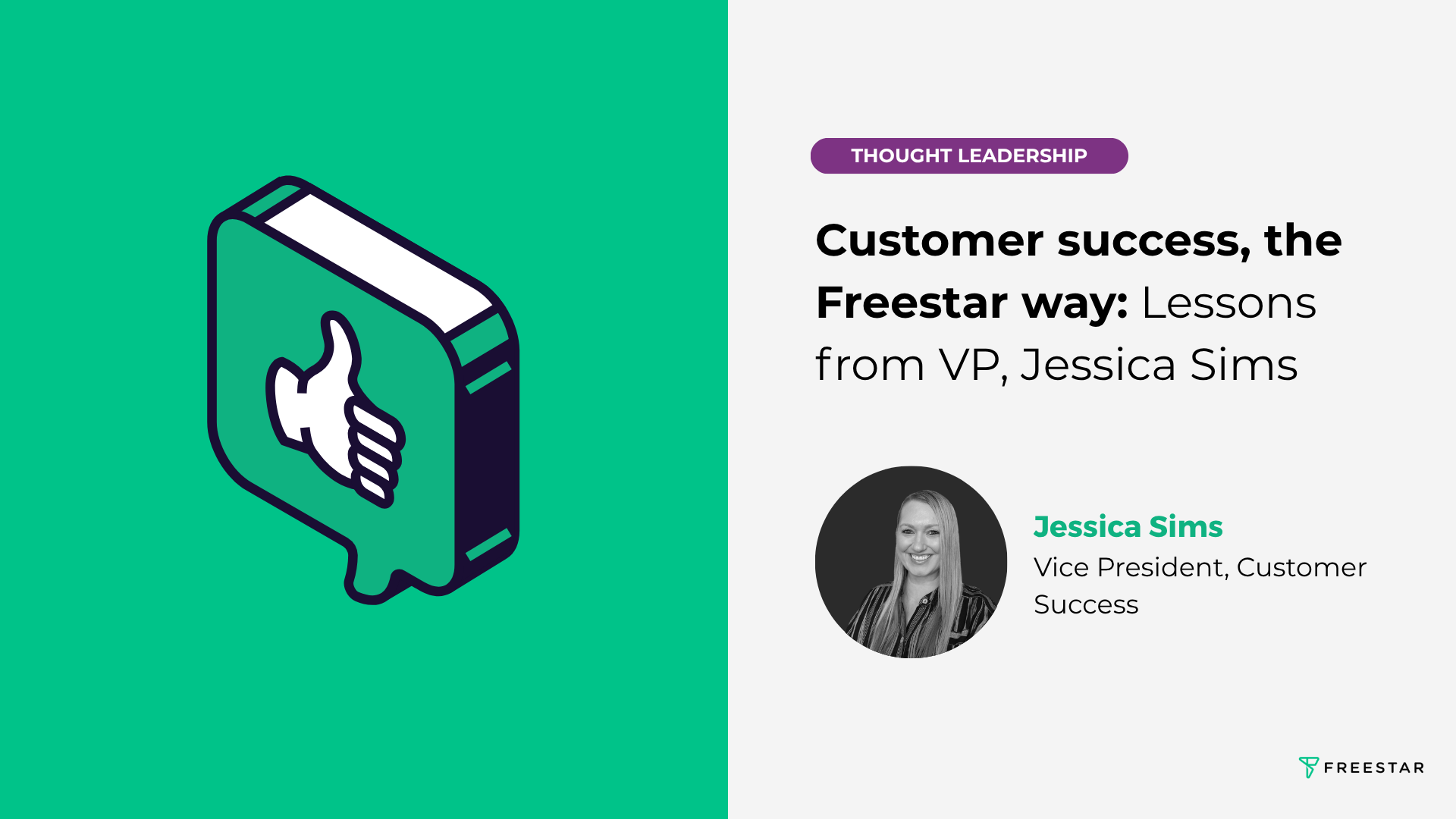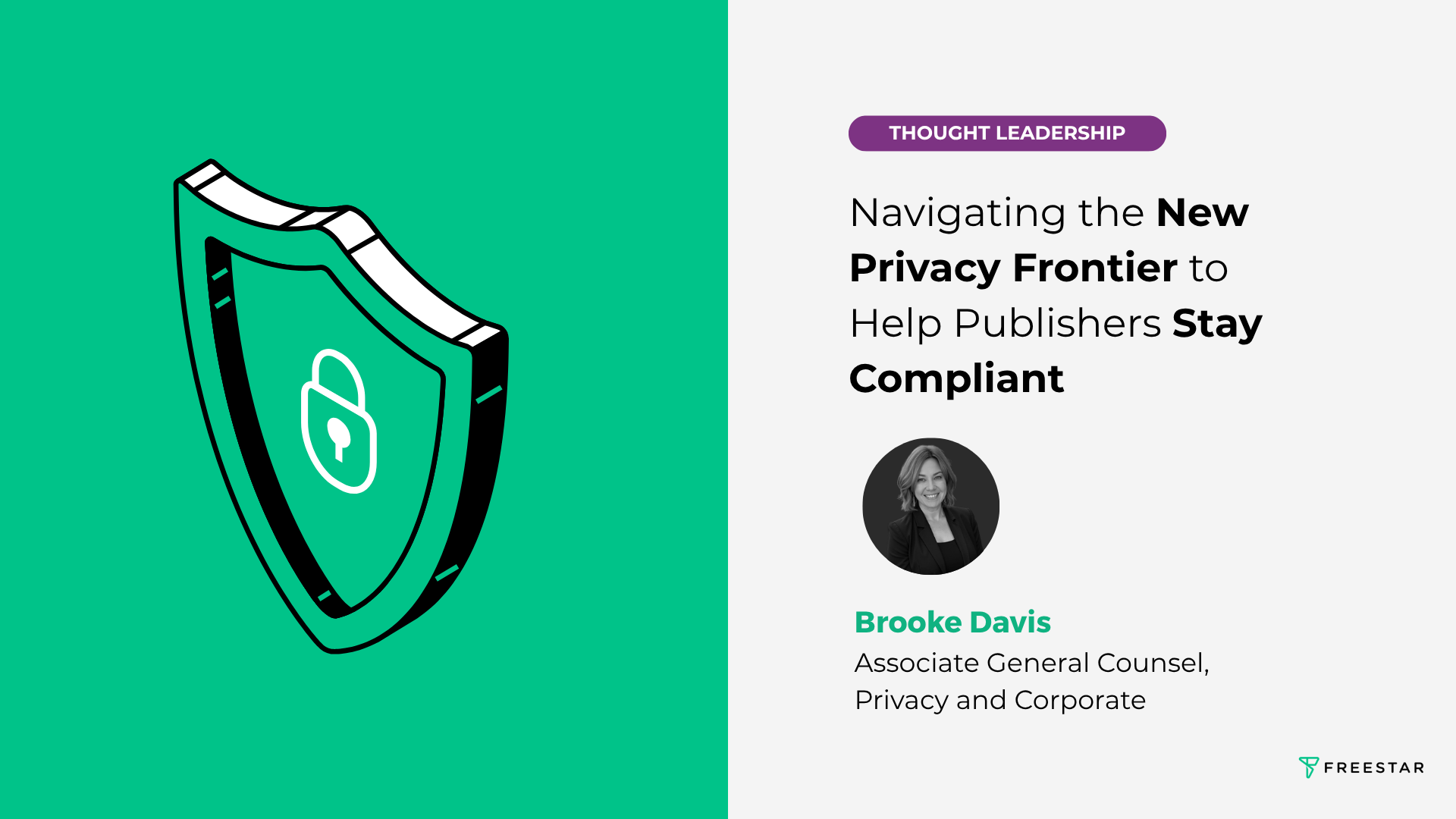This year marks Freestar’s 10th anniversary, a milestone that invites both reflection and renewed vision for what we do.
As we celebrate a decade of growth, we’re using this moment to share a series of insights from across the organization. We’ll look at how we’ve evolved, the leadership philosophies that guide us, and how we continue to blend cutting-edge technology with an unwavering commitment to people.
Over the next few months, we’ll dive deeper into our core pillars, including automation vs. human touch, purposeful curation, the importance of smooth onboarding, the emergence of agentic AI, and what it truly means to provide white-glove service in ad tech (because let’s face it, it’s easy to claim, but harder to do).
But today, we begin with our foundation.
From Publisher-First to People-First
When we launched Freestar, our mission was straightforward: help publishers maximize revenue, decrease costs and reduce the headaches of ad tech. That focus hasn’t changed, but how we deliver on it has matured. From day one, we intentionally took a different path from most tech companies.
As our co-founder David Freedman puts it, “the industry, in a lot of ways, is geared towards satisfying the advertiser while inadvertently taking advantage of the publisher. We didn’t want to be just another plug-and-play solution. We wanted to build something that actually solves problems for real people. In our case, that’s looking at specific use cases for individual publishers.”
That mindset led us to blend best-in-class technology with what we think of as Ritz-Carlton-level service. Yes, a Ritz and a Holiday Inn both offer a bed and a lobby, but the experience is worlds apart. That difference, which is mainly human-driven, is what we’ve leaned into. It’s not always the cheapest, but we do think it’s the best.
Intentional Service and Scalable Tech
Our approach has never been about chasing shiny objects or unnecessary product features. Instead, we focus on the real challenges our internal teams and customers put forward. Over the years, we’ve gotten much better at listening and building what they really need, not what we think they want. If you build something for the sake of it, hoping customers will jump on board and use it, you often will be hosting a party no one arrives at. Instead, we validate ideas with internal and external stakeholders before writing a single line of code.
For example, we recently overhauled our onboarding experience after talking to our customers and realizing that what was efficient for our internal teams was not what made our clients’ lives easier. While seemingly obvious, these first touchpoints set the tone for everything that follows, so we invested a lot of time and energy in getting it right. Was it the sexiest thing to invest in? No, but if we get onboarding right, the rest flows a lot smoother.
Another instance of this publisher-first approach is our recently launched Flex model, which includes full access to our award-winning monetization platform but with built-in tools for publishers to self-manage aspects of their ad stack. The result has been that more and more of the largest publishers in the world are putting their trust in us. They value our partnership and expertise, but they also appreciate the flexibility and freedom to carry on handling certain things that they do best.
Culture is the Glue That Holds Us Together
What keeps us cohesive across 15 countries in a fully remote work environment? Culture – not the ping-pong-table kind, but a culture defined by ownership, trust, and intentionality. We recently held a virtual retreat that, by all measures, felt more connected than many in-person events I’ve attended. That’s no accident – it’s the result of careful planning, clear values that are shared and celebrated by our whole team, and a lot of buy-in to our mission.
The key to making successful connections remotely is not pretending you’re in an office; instead, purposefully creating opportunities for engagement, often with a good dose of humor mixed in. That’s when the true magic happens and memories are made. What’s harder, in my opinion, is trying to make the hybrid scenario work. To create those moments in the office, you need to make sure the whole company is actually there at the same time, which is no longer an easy feat with teams constantly growing in number and physical distance.
At the end of the day, culture is the boss when the boss is not around, so it is certainly worth investing in.
Leadership That Listens
Leadership at Freestar isn’t about hierarchy – it’s about stewardship. While we, of course, provide general guidance from the top, we make it a point to involve our teams in decision-making because they are the ones who truly understand the details. Empowering our people to focus on what they do best not only brings them more fulfillment, but ensures we are making the most of our collective superpowers. As David says, “If you want lasting change, you need to make people champions of their own success.”
One of many great examples of this philosophy is our support team’s recent implementation of Zendesk. They scoped it, tested it, and rolled it out themselves. Not only did it streamline service, but it gave everyone a sense of ownership that you would never get with a random third-party implementation consultant.
Looking Ahead to the Next 10 Years
As we enter our second decade of growth, we’re more focused than ever on scaling intentionally. To demonstrate how, we’ll continue to share stories from across our teams, including engineering, onboarding, customer success, audience strategy, data privacy, and operations, so stay tuned for those. Each story will highlight how we live out our values every day and how we’re preparing for what’s next. AI will, of course, be part of that future, but not in a superfluous way; rather, a way that aligns with our belief in empowering people, not replacing them.
At Freestar, we don’t believe great service and great technology are mutually exclusive. In fact, when done right, they make each other better. That’s been our belief for 10 years and will continue to guide us for the next 10.





